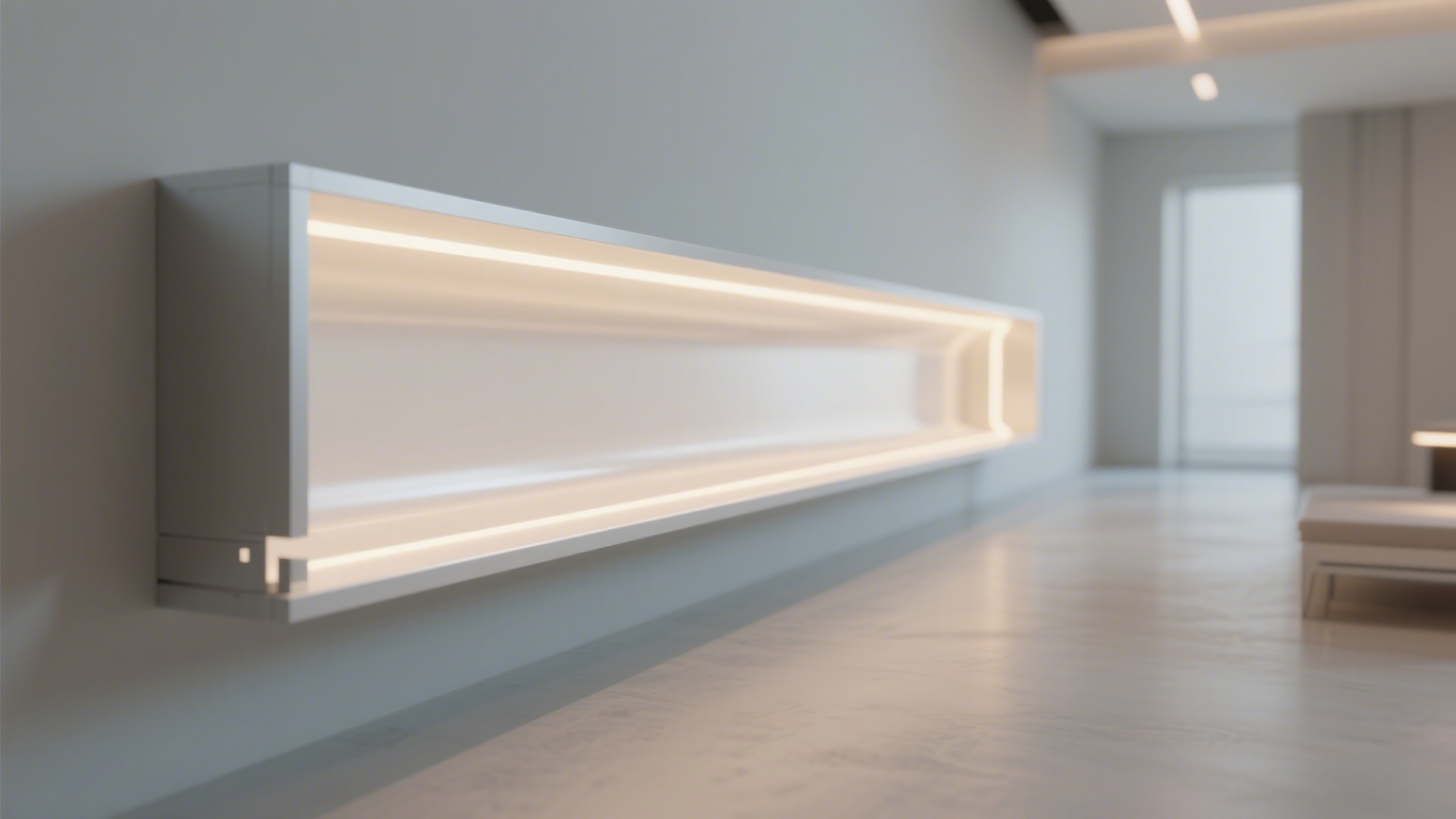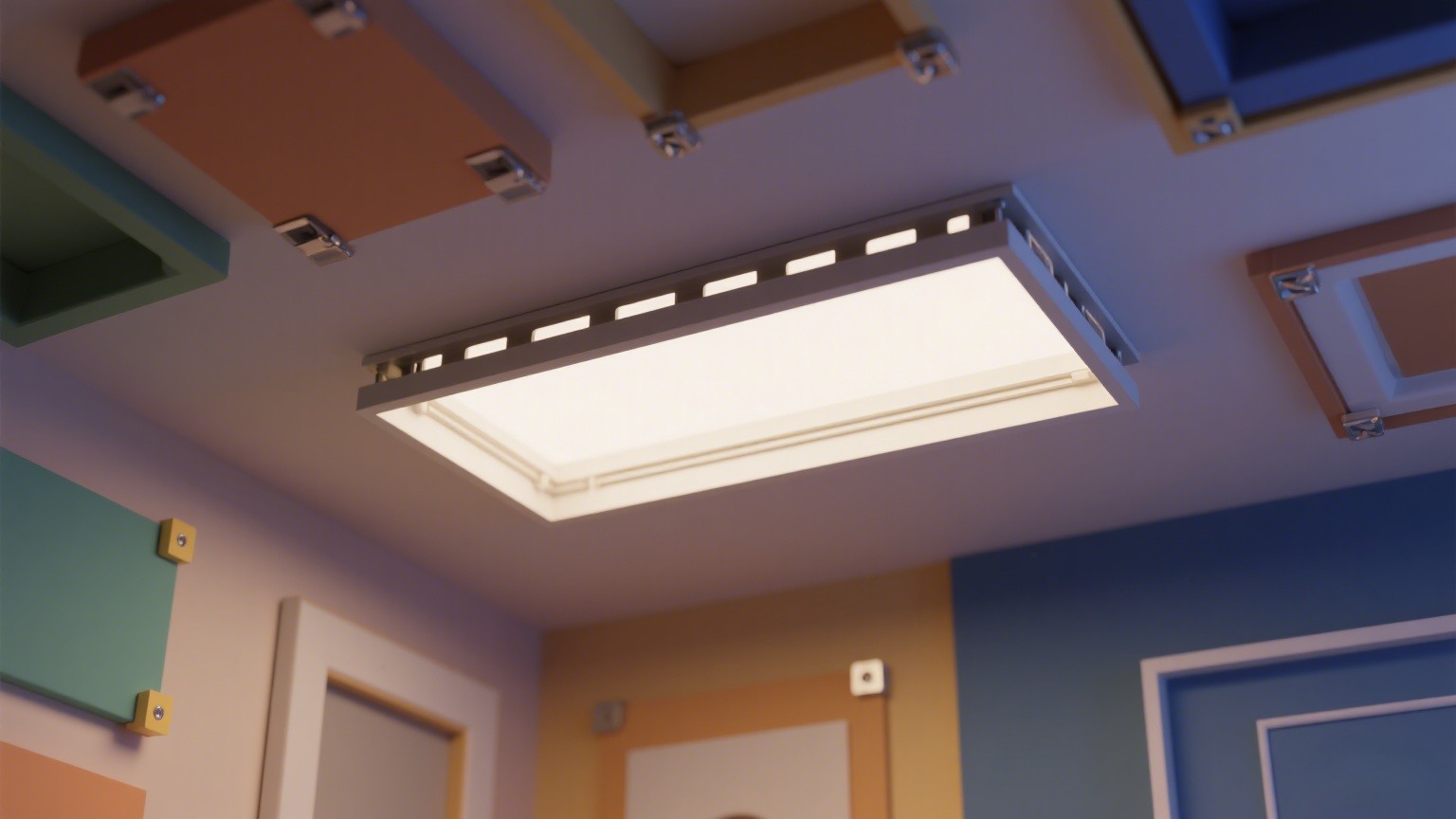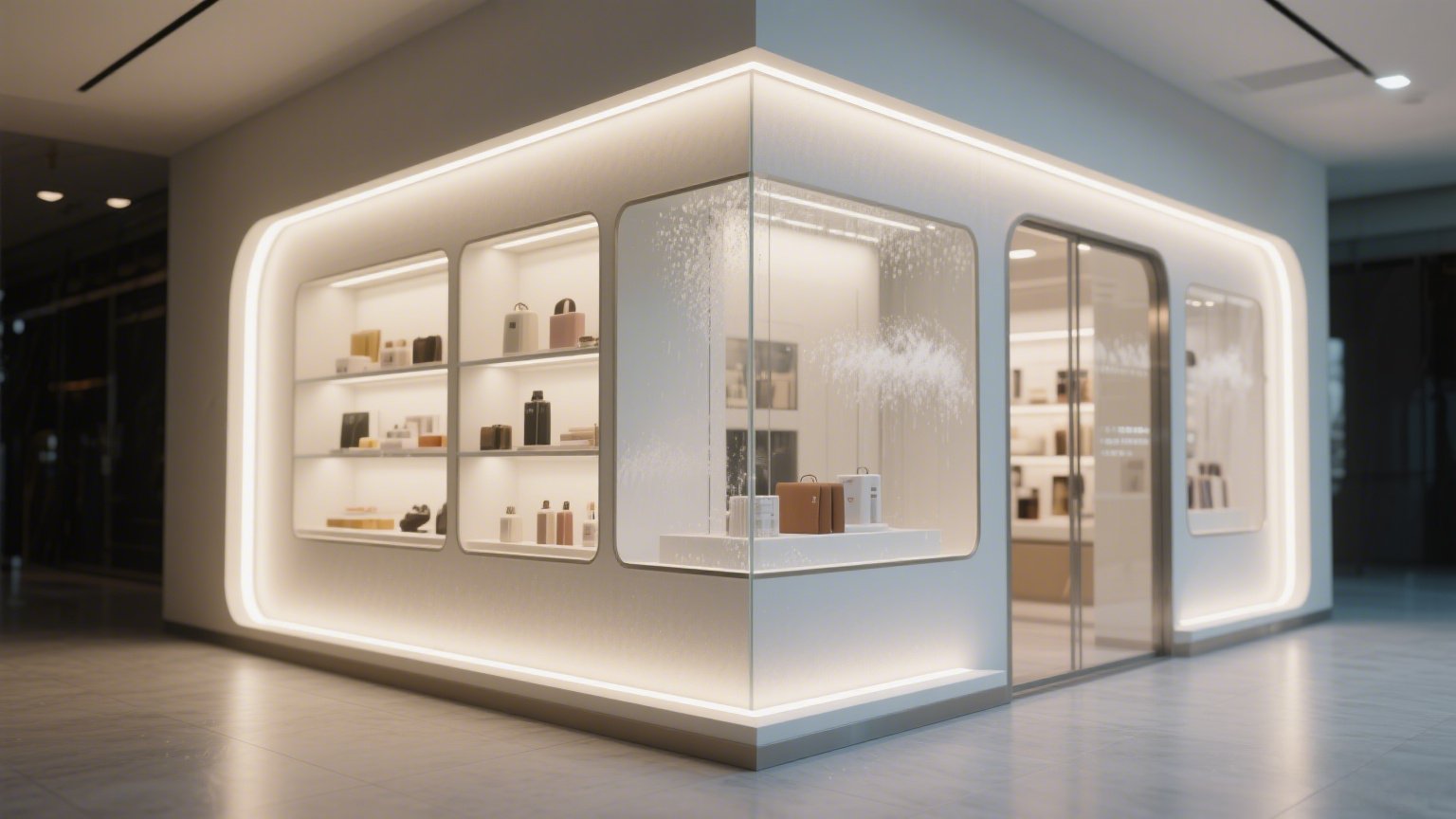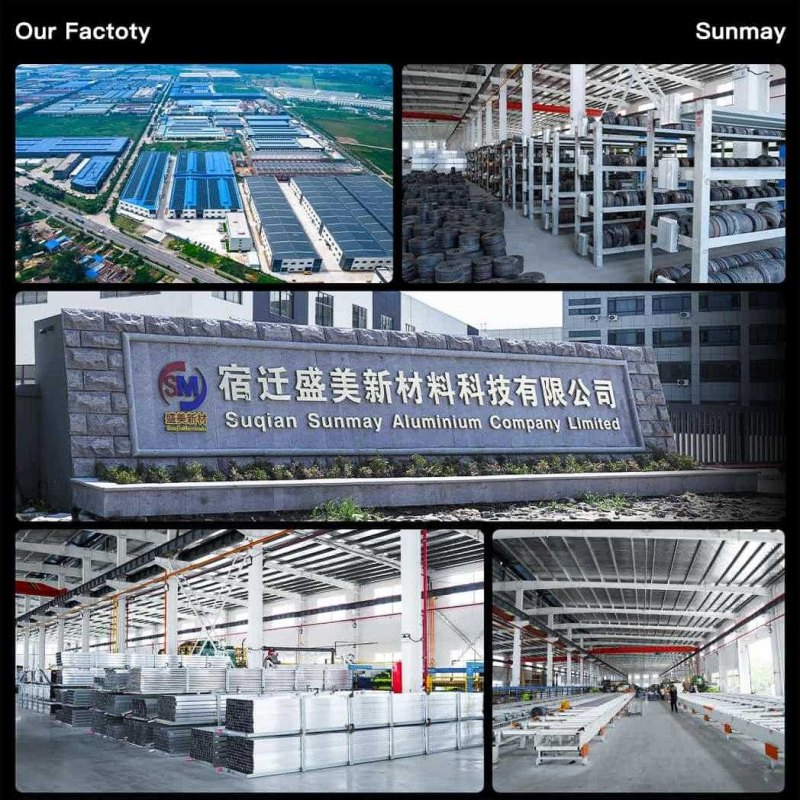Projeniz İçin Doğru LED Işık Kanalını Seçmeye Yönelik Eksiksiz Kılavuz
Aug 01, 2025
Bir LED ışık kanalı (LED şerit kanalı veya LED profili olarak da bilinir), LED şerit ışıklarını takmak ve gizlemek için tasarlanmış özel bir muhafazadır. Genellikle alüminyum alaşım veya PVC'den üretilen bu kanallar, estetik, ısı dağılımı, toz koruması ve dayanıklılık sunar. Dağınık ve açıkta kalan kabloları önlemek için LED şeritleri etkili bir şekilde gizler ve sert doğrudan ışığı yumuşatmak için difüzörler veya ışık kılavuzları kullanarak daha eşit ve konforlu bir aydınlatma efekti yaratır. Evlerde, mağazalarda veya ofislerde modern ve minimalist bir stil hedefleyenler için LED ışık kanalları, gömme aydınlatma, ortam aydınlatması ve vurgulu aydınlatma çözümleri elde etmek için olmazsa olmaz bileşenlerdir.

LED kanalları, LED şeritleri gizleyerek yalnızca ışığın görünmesini sağlar ve özellikle tavanlar, köşeler ve dolaplar için uygun, daha yumuşak ve modern bir aydınlatma sunar. Işık kaynaklarını gizleyerek parlamayı önleyen ve genel tasarım ambiyansını iyileştiren bu kanallar, aydınlatmanın ayrı armatürler olarak öne çıkmak yerine ortama kusursuz bir şekilde uyum sağlamasını sağlar. Günümüzün gömme aydınlatma trendinde, LED kanalları üst düzey bir his ve görsel derinlik yaratmak için idealdir.
Alüminyum kanallar, LED şeritlerin ömrünü uzatmak için hayati önem taşıyan ısıyı dağıtmada mükemmeldir. LED'ler uzun süreli kullanım sırasında ısı üretir ve bu da doğru şekilde yönetilmezse parlaklığın azalmasına ve kullanım ömrünün kısalmasına neden olabilir. Alüminyum kanallar ısıyı verimli bir şekilde ileterek, sabit çalışma sıcaklıklarını korur, bileşen hasar riskini azaltır ve zaman içinde bakım maliyetlerini düşürür.
LED kanallar genellikle hızlı kurulum ve şerit değişimi için yuvalar, raylar veya özel klipsler içerir. Kullanıcılar, özel aletlere veya uzmanlığa ihtiyaç duymadan LED şeridi kanalın içine yerleştirip bir difüzörle kaplayabilirler. Bazı kanallar, daha hızlı kurulum ve sökme için manyetik bağlantı elemanları kullanır ve bu da onları aydınlatma düzenlerinin sık sık değiştiği ticari alanlar, sergiler veya ev projeleri için mükemmel kılar.
Kanallar, LED şeritleri toz, nem ve fiziksel hasarlardan koruyarak, sökülmelerini veya bozulmalarını önler. Bu, özellikle nem ve tozun LED ömrünü kısaltabileceği mutfak, banyo veya dış koridor gibi nemli alanlarda önemlidir. Ayrıca, kapalı tasarım, çocukları ve evcil hayvanları elektrikli bileşenlerle doğrudan temastan koruyarak genel güvenlik ve güvenilirliği artırır.
| Tip | Özellikler | Tipik Uygulamalar |
|---|---|---|
| Gömme Kanallar | Gizli aydınlatma için tavanlara veya duvarlara monte edilir | Oturma odası tavanları, ticari alanlar |
| Yüzeye Monte Kanallar | Yüzeylere monte edilir, kurulumu kolaydır | Showroomlar, dolaplar, duvar dekorasyonları |
| Köşe Kanalları | Köşeler veya tavan kenarları için tasarlanmıştır | Ev dekorasyonu, özellikli duvarlar |
| U Şeklinde Alüminyum Kanallar | Pürüzsüz doğrusal aydınlatma için difüzör içerir | Doğrusal aydınlatma, ofisler, teşhir alanları |
Koruma derecesi, LED kanallarının su ve toz geçirmezlik kapasitesini ölçer. Bu standarda göre, LED kanalları temel olarak aşağıdaki kategorilere ayrılır:
LED kanalları kurulum ortamlarına göre de farklılık göstermektedir:

IP koruma derecesi, toz ve suya dayanıklılığı değerlendirmek için kullanılan uluslararası bir standarttır. İki rakamdan oluşur: İlk rakam toz korumasını, ikinci rakam ise su geçirmezliği gösterir. Örneğin, IP65 derecesi, tam toz önleme için "6" ve düşük basınçlı su jetlerine (3 metre mesafeden 3 dakika boyunca her yönden 12,5 L/dk) dayanıklılık için "5" anlamına gelir.
Su geçirmezlik gereksinimleri ortama göre değişir:
Güvenli kurulum ve optimum aydınlatma için kanal boyutunun LED şerit genişliğine uygun olması kritik öneme sahiptir. Çok geniş bir kanal, şeridin hareket etmesine ve stabiliteyi etkilemesine neden olur; çok dar bir kanal ise kurulumu zorlaştırır. 12V LED şeritlerin tam boyutlarını bilmek, mükemmel bir uyum sağlamanıza yardımcı olur.
Uyumluluk elektriksel ve termal hususları da kapsar; şeritlerin uzun ömürlü olması için kanalların uygun ısı dağılımını desteklemesi gerekir.
Dış aydınlatma, binanın gece görünümünü iyileştirir ve su geçirmez, yaşlanma karşıtı ve ısı dağıtma özelliklerine sahip kanallar gerektirir. Önerilen kurulum: dış mekan LED ışık şeritleri IP65 alüminyum kanallarla donatılmıştır. Alüminyum, istikrarlı bir çalışma sağlarken, su geçirmezlik özelliği zorlu hava koşullarına karşı koruma sağlar.
Vaka Çalışması: Ticari bir binada, dış hatlarını belirginleştiren renkli dış LED şeritlerle IP65 alüminyum kanallar kullanılmış ve bu sayede fark edilirliği ve görsel çekiciliği artıran çarpıcı bir gece silüeti yaratılmıştır.
Dış mekan bahçe aydınlatması sıcak ve davetkar atmosferler yaratır ve hava koşullarına dayanıklı olmalıdır. su geçirmez dış mekan LED şeridi nem, çiğ ve gübre gibi kimyasallara karşı dayanıklı, korozyona dayanıklı kanallara sahip ışıklar.
Kurulum İpucu: Bitki kökleri, taş yarıkları veya çit arkaları boyunca kabloları gizleyin. Görünür armatürler veya kablolar olmadan doğal ışık yayılımı için kanalları gizli noktalara (kayaların arkasına veya çalıların altına) yerleştirin.
Vitrinler ve teşhir dolapları, ürünleri öne çıkarmak için aydınlatmaya ihtiyaç duyar. Bu alanlar, IP54 veya IP65 dereceli kanallar gibi su ve toz geçirmez çözümler gerektirir. suya dayanıklı LED şerit ışıklarDolaylı aydınlatma parlamayı azaltarak ürün görünürlüğünü ve müşteri ilgisini artırır.

Dış mekan LED kanal montajında su geçirmezlik çok önemlidir. Birleşim yerlerinde ve bağlantı noktalarında özel su geçirmez bant veya sızdırmazlık malzemesi kullanın. Korumayı sağlamak için kanal uçlarını dikkatlice kapatın.
Özellikle şiddetli yağmurdan sonra, contaları ve iç temizliği düzenli olarak kontrol edin. Hasarlı contaları değiştirin veya gerekirse sızdırmazlık maddesini yeniden uygulayın. Performansın sürekliliğini sağlamak için kanallardaki su veya toz birikimini temizleyin.
Rüzgar veya titreşimlerden kaynaklanan gevşemeyi önlemek için güvenli montaj hayati önem taşır. Uzun mesafeler için, kanalların sabit ve hizalı kalmasını sağlayacak yeterli destek yerleştirin.
IoT özellikleriyle entegre akıllı LED kanalları giderek popülerlik kazanıyor. Ayarlanabilir parlaklık, renk sıcaklığı kontrolü ve akıllı telefon uygulamaları veya akıllı ev sistemleri aracılığıyla uzaktan yönetim imkanı sunarak kullanıcı rahatlığını ve enerji verimliliğini artırıyor. Yeni malzemeler arasında şunlar yer alıyor: çevre dostu alüminyum alaşımları Gelişmiş ısı dağıtıcı plastikler, kanal performansını iyileştirerek dayanıklılıktan ödün vermeden ağırlık ve maliyetleri azaltır. Bazı kanallar artık otomatik parlaklık ayarı için ışık sensörleri içeriyor ve bu da enerji tasarrufunu daha da artırıyor. Gelecek, gelişen proje ihtiyaçlarına ve teknolojik gelişmelere uyum sağlayan modüler, çok işlevli ve akıllı LED kanallarında yatıyor.

Sunmay Yılların deneyimiyle yüksek kaliteli, güvenilir aydınlatma aksesuarları konusunda uzmanlaşmıştır LED ışık kanalları, LED şerit muhafazaları ve dünya çapında özel aydınlatma çözümleri sunuyoruz. IP65 su geçirmezlik derecesine sahip birinci sınıf alüminyum alaşımlı kanallar kullanıyoruz ve bunlar iç/dış mimaride, ticari aydınlatmada ve ortam aydınlatması ev tasarımlarında yaygın olarak kullanılıyor. Ürünlerimiz ısı dağılımı, toz ve suya dayanıklılık, estetik yapı ve kolay kurulum özelliklerini ön plana çıkararak, müşterilerimizin profesyonel düzeyde aydınlatmaya zahmetsizce ulaşmalarına yardımcı oluyor. İstikrarlı bir tedarik zinciri ve gelişmiş üretim süreçleriyle Sunmay, dünya çapında çok sayıda mühendislik projesi ve aydınlatma tasarımcısı için güvenilir bir ortaktır.
Projeniz için LED ışık kanalları seçerken, öncelikle ortama bağlı olarak gerekli koruma derecesini belirleyin; açık havadaki açık alanlar yüksek koruma gerektirir. IP65 veya üzeri, nemli iç mekanlarda ise standart sıçramaya dayanıklı kanalları tercih edebilirsiniz. İlk bütçenizi uzun vadeli ihtiyaçlarınızla dengeleyin. Yüksek kaliteli ve yüksek korumalı kanallar başlangıçta daha pahalı olsa da, daha uzun hizmet ömrü ve daha az bakım sunarak zaman içinde tasarruf sağlar. Daha kolay kurulum ve gelecekteki aydınlatma yükseltmeleri veya değişimleri için modüler, genişletilebilir kanal tasarımlarını tercih edin; böylece sisteminiz projeler geliştikçe uyum sağlar. Bu faktörleri dikkatlice değerlendirerek, en uygun LED ışık kanallarını güvenle seçebilir ve olağanüstü aydınlatma sonuçları elde edebilirsiniz.
Whatsapp : +8617366266559
E-posta : sales@sunmayalu.com
tel : +86 -17366266559
Hi! Click one of our members below to chat on